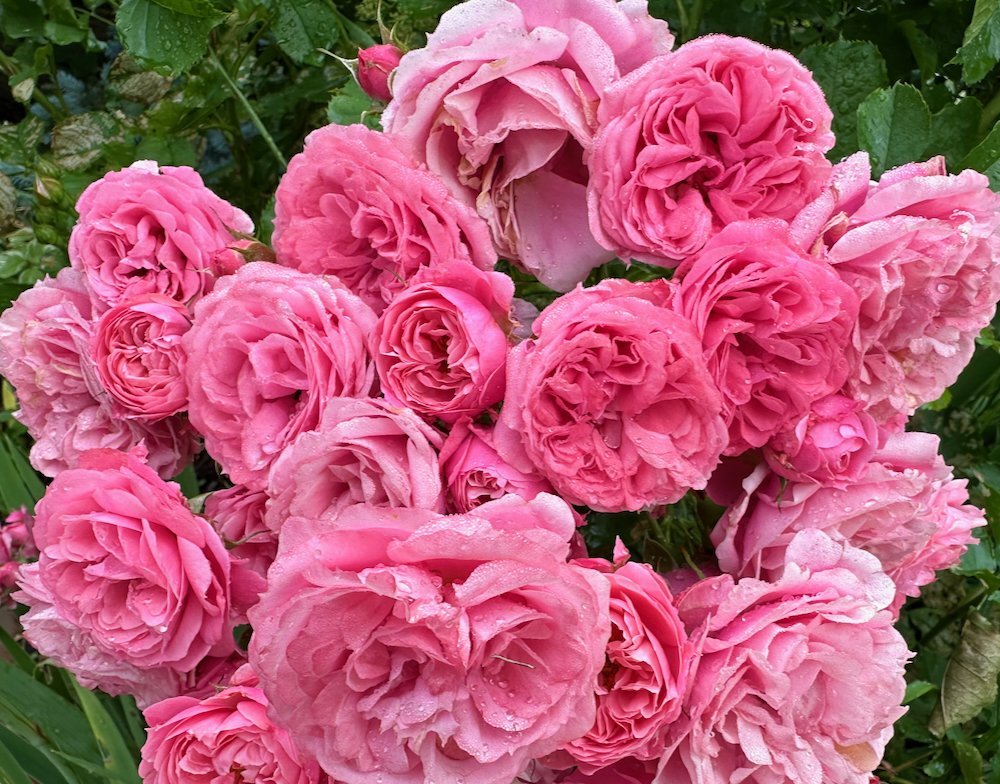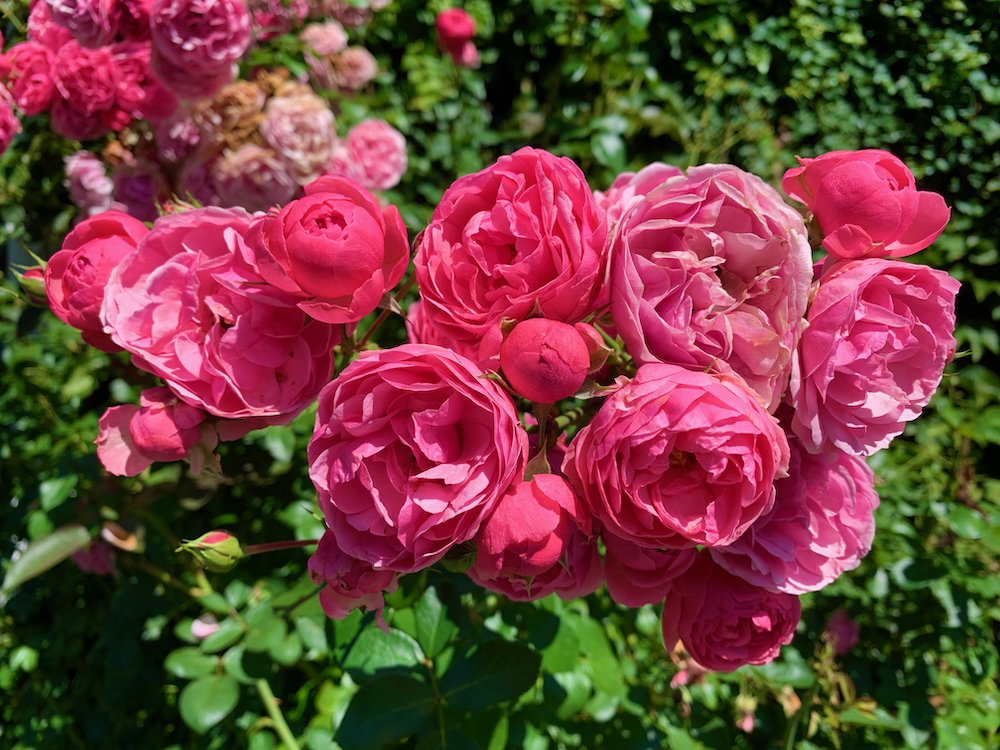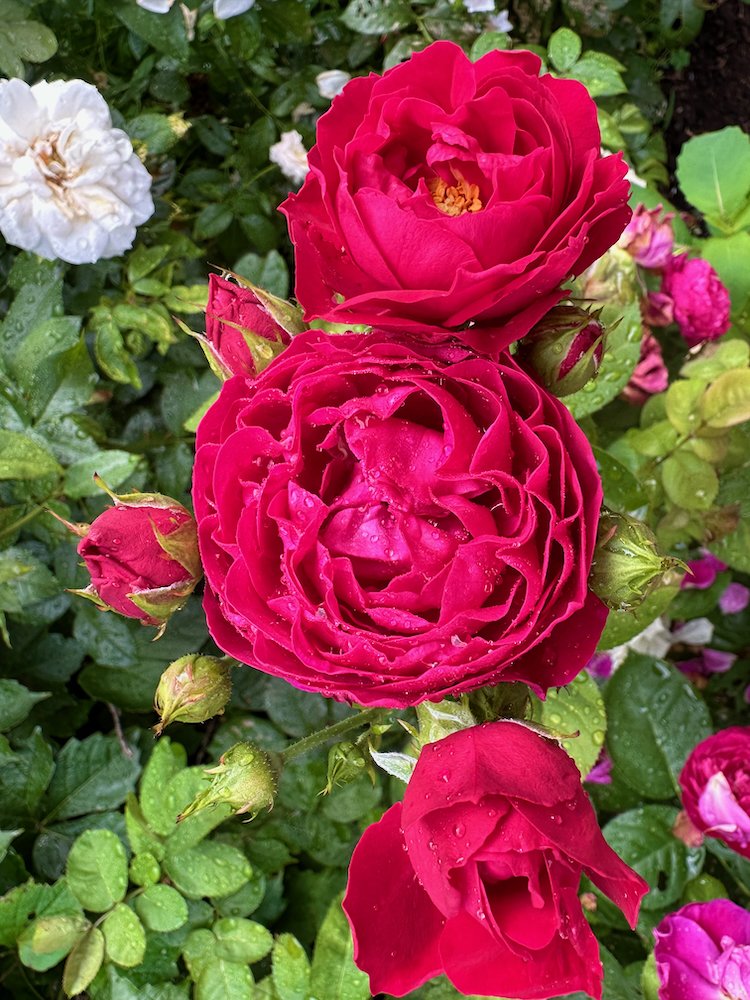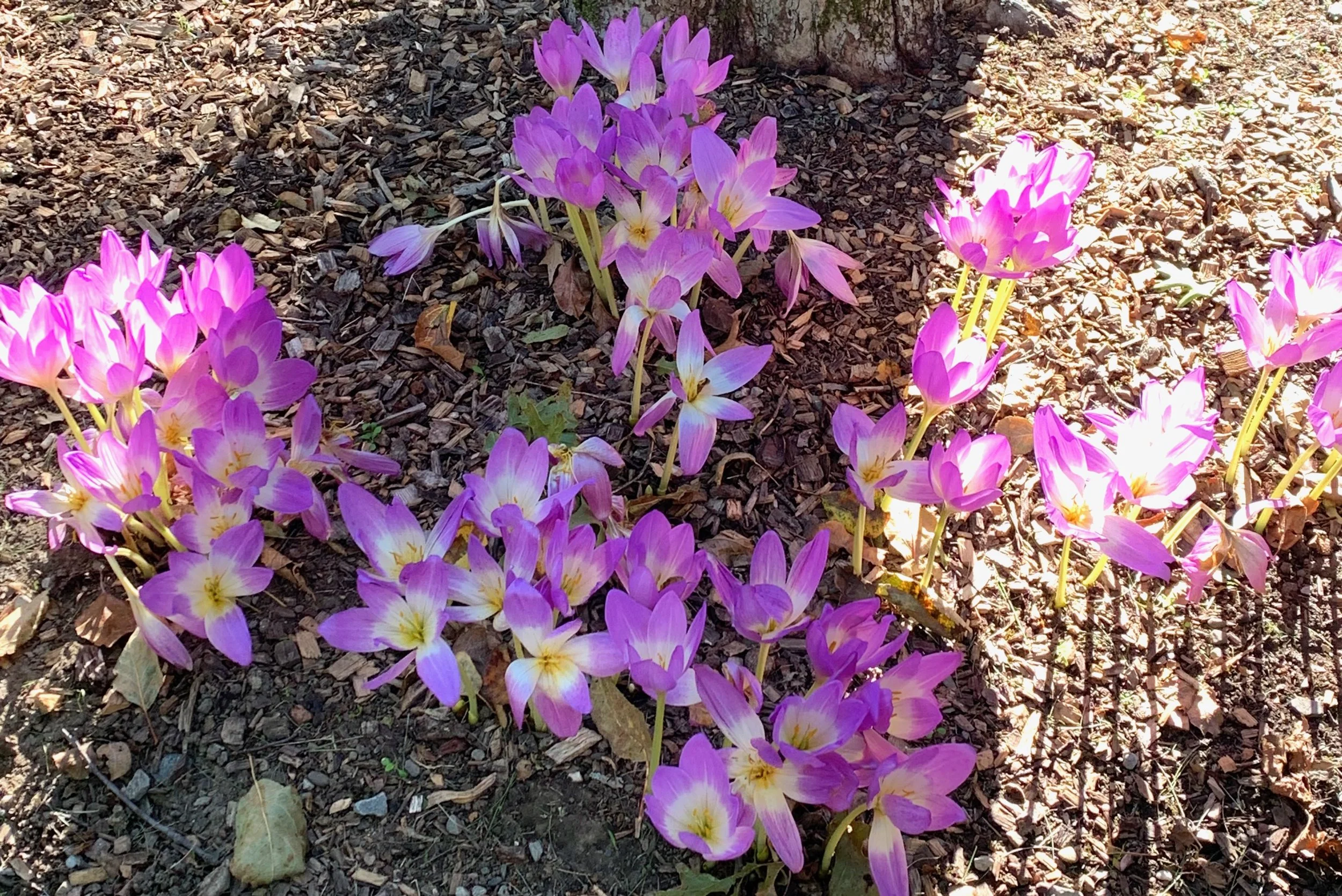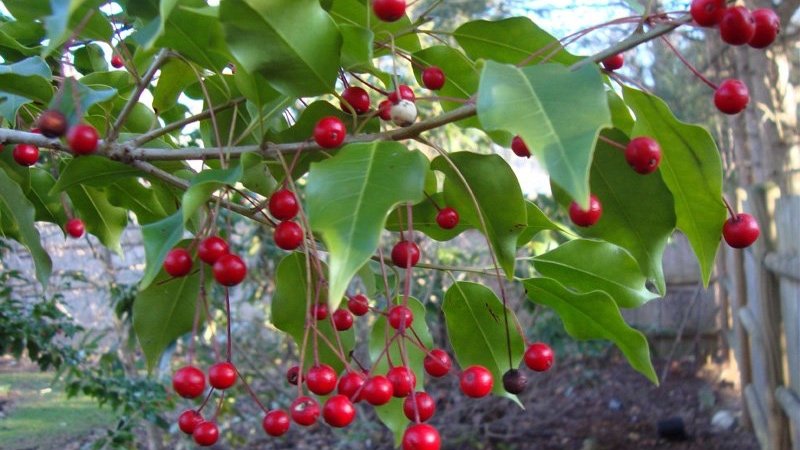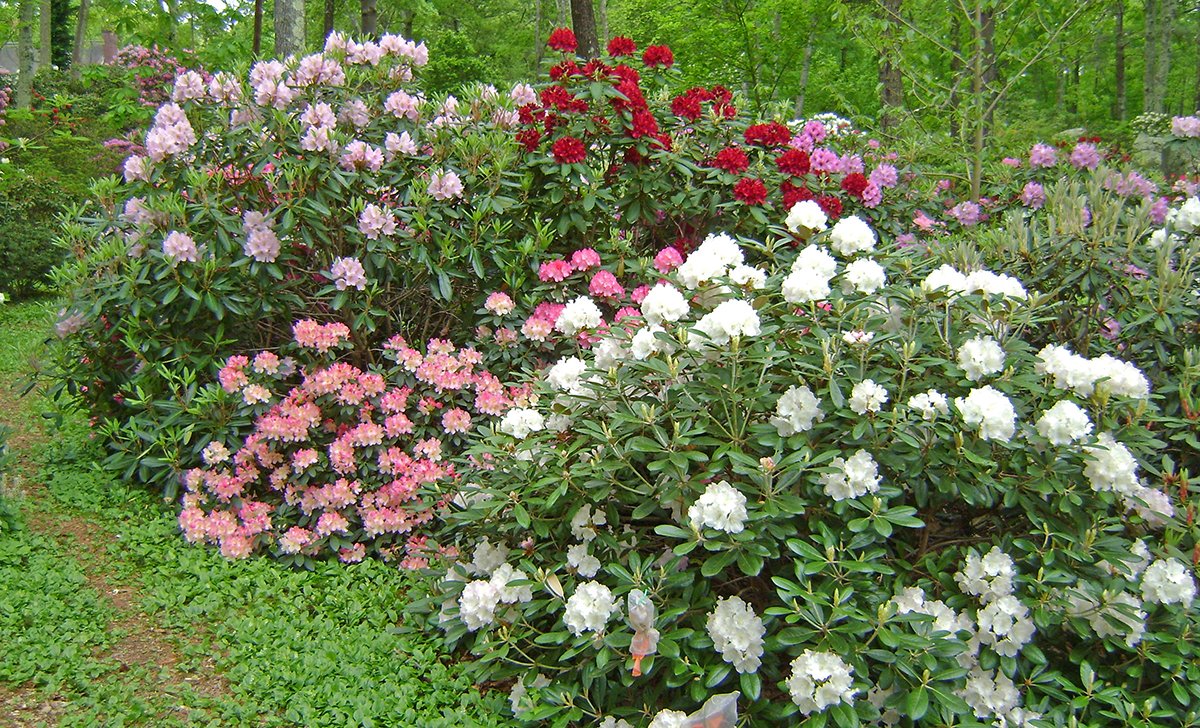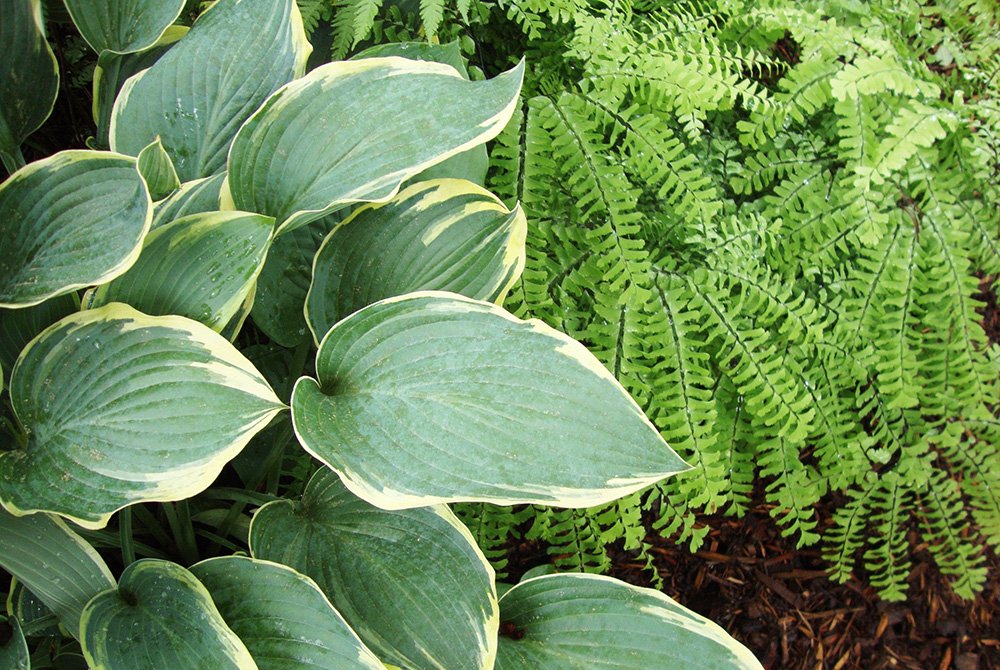The Quest for the Perfect Rose
/Rose Lion’s fairy tale with Clematis Huldine
Every year I focus on updating a different section of my garden, and 2016 was the year of the rose bed. I have always grown roses in my garden—in fact they were the first flowers that I planted when we moved into our house in 1992. Six roses came on the moving truck with us from the city. I grew them in pots on the porch of our rented apartment in Somerville, and overwintered them in the unheated stairwell. They went into the ground in a circular bed in my front yard, created by the previous owner's leaf pile that had been left there over the winter. Most of them did not survive that exposed, windy location, pummeled by northwestern winds all winter long. I was a novice gardener, and did not realize that my tender hybrid teas needed winter protection. But despite my lack of success, I was determined to grow roses in my garden.
Aloha Rose was one of the roses that I brought from my city apartment, and it blooms to this day on my trellis.
Rose aloha, now 34 years old
I created new beds in sheltered locations, and ordered barefoot rose collections—hybrid teas from Jackson and Perkins for the bed bordering my stone garage, fragrant David Austin roses to grow along the fence. The roses were undoubtedly fussy plants, ravaged by aphids and Japanese beetles, and stripped of their leaves due to blackspot and other fungal diseases. Despite winter protection, some reverted to their Blaze rootstock, so instead of a yellow shrub rose, I ended up with another red climber that bloomed only once a year.
But when they were in bloom, the roses were gorgeous. Every year, my children lavishly decorated the table with roses for my Mother's Day breakfast, and made elaborate bouquets for my June birthday celebration. They even brought me a bouquet of my roses when I was in the hospital one November. So even as I debated whether I should continue growing these beautiful, fussy flowers, I knew that I could not give them up. I decided to go on a quest for roses that were winter hardy, disease-resistant, fragrant, re-blooming, and had the "cabbage-rose" look of old-fashioned roses that I love.
a birthday bouquet made by my daughter
At the Connecticut Flower Show, I attended a wonderful lecture by Mike and Angie Chute (RoseSolutions) entitled "Twenty-Five Fabulous Roses". Mike and Angie just published a book of 150 easy to grow, sustainable roses: Roses for New England: A Guide to Sustainable Rose Gardening. I was delighted to learn about roses that could be grown here in Massachusetts without winter protection and without constant fungicide or pesticide application. Most of these are hybrids that have been developed in the last 15 years. While Mike shared his list of 25 favorite roses, I asked him to point out those that were also fragrant. Sadly, in an effort to hybridize for hardiness, disease-resistance and a long season of bloom, modern hybridizers had sacrificed fragrance. Of the 25 roses on Mike's list, only 6 were fragrant.
I also found a second excellent guide to disease-free roses by Peter E. Kukielski, Roses Without Chemicals. Peter is the former curator of the rose garden at New York Botanical Garden, and this book highlights 150 tough new varieties of roses that perform well in all kinds of conditions. Each rose in the book has a detailed description along with a point rating which includes scores for disease resistance, bloom, fragrance and an overall score.
Cross-referencing both lists, culling out only fragrant roses and those with full, cabbage-rose heads, choosing those hardy to our zone and those that grew in a particular size range, I came up with a list of about 15 roses. Now the challenge was to find them for sale. I decided to order them via mail-order so that I could get them in the ground early. Nurseries often do not have roses until May. I was also looking primarily for bare-root, because I think that it's easier to establish bare-root shrubs in the garden. Some nurseries have already closed bare-root orders for the season. In the end, I was only able to find about half of my list, and placed my orders at White Flower Farm, Heirloom Roses, and Palatine Roses in Canada.
rose pink martini
rose first crush
My final selections were Pink Martini, Ascot, First Crush, Lion's Fairy Tale, Mother of Pearl, Pomponella, Summer Memories, and Cinderella.
Rose cinderella
Rose mother of pearl
It has been eight years since I purchased the new roses and they are all going strong. The best plants were from Palatine Roses and came bare-root. They grow to about 5 feet, bloom from June to October, and the foliage remains blemish-free all season long. My annual maintenance includes pruning and adding compost in spring, and monthly fertilization with Epsom Rose fertilizer monthly from May to August.
The best time to order plants from Palatine Roses is in January as they sell out very quickly.
I hope that you’re inspired to grow disease-free roses. They will reward you with years of bountiful flowers!
rose ascot
rose summer memories
You Might Also Like










